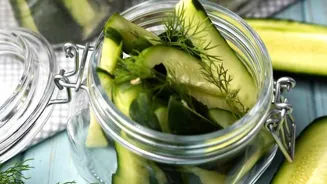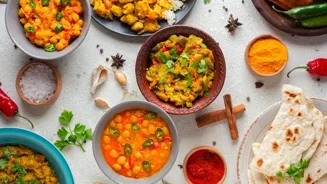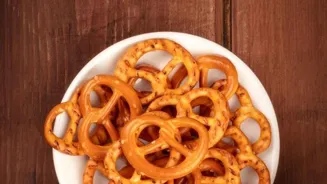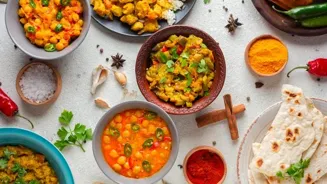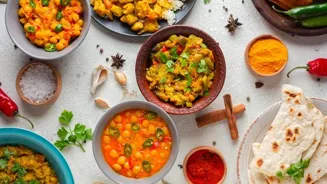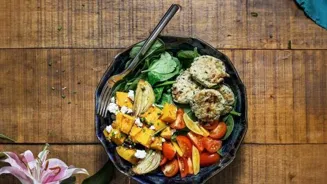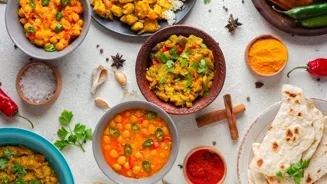Discover the art of making Authentic Indian Pickles in a step-by-step guide! Unveil the secrets of tradition and flavor
India is a land of diverse cultures and flavors, and nothing exemplifies this more
than the humble pickle. From the tangy mango pickle to the spicy lime pickle, these flavour bombs add a zing to every meal.
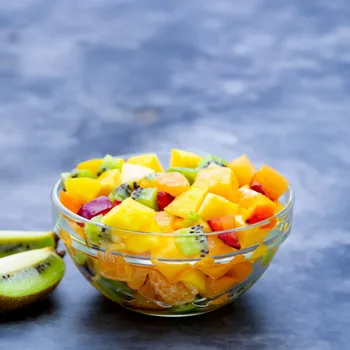
Making your own Indian pickle at home is easier than you think, and the result is a taste of tradition passed down through generations. No fancy gadgets or complicated processes are needed, just simple ingredients and a little patience.
This guide will walk you through the basics of creating authentic Indian pickles that will tantalize your taste buds!
Hygiene and ingredients key in making pickles; choose fresh produce
First, let's gather the essential ingredients and tools. Remember, hygiene is super important when making pickles to prevent spoilage. So, ensure all your utensils, jars, and ingredients are clean and dry.
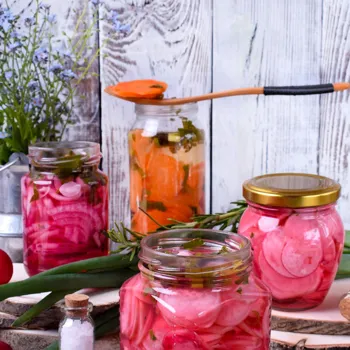
The basic ingredients that you'll need regardless of the type of pickle are raw vegetables or fruits (like mangoes, lemons, carrots, or chilies), salt, turmeric powder, red chili powder, mustard seeds, fenugreek seeds (methi), asafoetida (hing), and mustard oil or any other vegetable oil.
For equipment, you'll require a clean, dry ceramic or glass jar for pickling, stainless steel bowls for mixing, a clean, dry spoon, and a muslin cloth to cover the pickle during the sun-drying process. Selecting the right ingredients is crucial.
Opt for fresh, firm vegetables or fruits that are free from blemishes. Experiment with different combinations to discover your favorite pickle recipes.
Quickly learn simple method for making pickles with spices
The method is quite simple and can be learned quickly. Begin by washing and drying your chosen vegetables or fruits thoroughly. Cut them into small, manageable pieces. In a large bowl, combine the cut vegetables or fruits with salt and turmeric powder.
Mix well and let it sit for a few hours or overnight. This process helps to draw out excess moisture and prevents the pickle from becoming watery. Next, grind the mustard seeds and fenugreek seeds into a coarse powder.
Heat the mustard oil (or your chosen oil) in a pan until it reaches the smoking point. Turn off the heat and let the oil cool down completely. Add the asafoetida to the cooled oil.
In the bowl with the vegetables or fruits, add the ground spices, red chili powder, and the cooled oil with asafoetida. Mix everything well, ensuring that all the pieces are coated evenly with the spices.
Pickling process tips for flavorful, long-lasting pickles
Now comes the process of pickling, which is important. Transfer the mixture into the clean, dry jar. Press down gently to remove any air pockets. Cover the mouth of the jar with a clean muslin cloth and secure it with a rubber band or string.
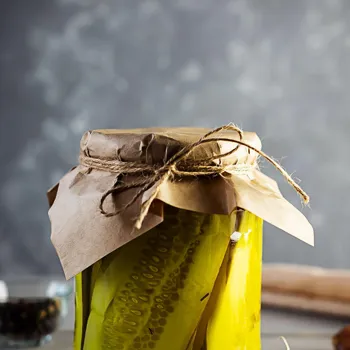
Place the jar in direct sunlight for several days, usually around five to seven days, stirring the pickle every day to ensure even fermentation. The sunlight helps to activate the enzymes and promote the pickling process. Taste the pickle after a few days.
If it needs more salt or spices, add accordingly. Once the pickle has reached your desired level of sourness and flavor, it is ready to be stored. Store the pickle in a cool, dark place. Always use a clean, dry spoon to take out the pickle to prevent contamination.
Properly stored pickles can last for several months, even up to a year if you follow hygienic practices.
Various types of pickles: mango, lemon, carrot, chili, garlic
There are different types of pickles that you can try. Mango pickle (aam ka achar) is perhaps the most popular. There are two variants, sweet and spicy. Sweet mango pickle typically includes sugar or jaggery in the recipe.
Lemon pickle (nimbu ka achar) is another favorite, known for its tangy and pungent flavor. Carrot pickle (gajar ka achar) is common in North India, especially during the winter months. It offers a slightly sweet and spicy taste. Chili pickle (mirchi ka achar) is for those who like it hot.
You can use green or red chilies, or a mix of both. Remember to wear gloves when handling chilies! Garlic pickle (lahsun ka achar) has a unique flavor and is believed to have medicinal properties. This is particularly common in states like Rajasthan and Gujarat.
Pickling in Indian culture: culinary tradition, community activity, symbol of hospitality
Pickling is more than just a culinary process, as it is embedded in Indian culture. It's an art, a tradition passed down through generations, and a symbol of Indian hospitality. Families often have their own unique pickle recipes, guarded closely and passed down to their children or grandchildren.
Making pickles is a community activity in many villages. Women gather together, share stories and laughter, and work together to prepare large batches of pickles for the entire community. Offering homemade pickles to guests is a sign of warmth and generosity.
Many Indians consider pickles to be an essential part of their diet, believing in their digestive benefits.
Experiment with homemade Indian pickles to savor tradition and flavors
Enjoy your homemade Indian pickles with rice, roti, paratha, or even as a side dish with your regular meals. With a little practice, you'll be creating mouthwatering pickles that will impress your friends and family.
Feel free to experiment with different ingredients and spices to create your own signature pickle recipes. Remember, making pickles is not just about the taste; it's about preserving a tradition, celebrating flavors, and adding a dash of joy to your daily life.
So, go ahead and get started on your pickling journey. You'll not only enjoy the delicious flavors but also experience the magic of Indian culinary heritage. Happy pickling!
AI Generated Content. Glance/InMobi shall have no liability for the content